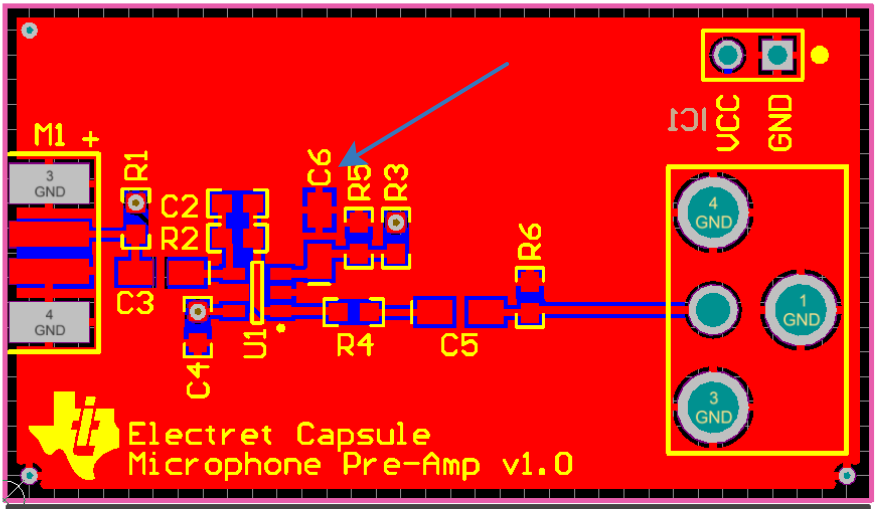Other Parts Discussed in Thread: OPA322
I'm a newbie, so please bear with me.
I made this pleamp - https://www.ti.com/lit/ug/tidu765/tidu765.pdf - and it kind of works. But I made it with another mic model - https://mouser.com/datasheet/2/670/cmc-6027-24t-1777130.pdf. The difference is sensitivity - the original design mic has -42 dB and the one I used -26 dB. Everything else seems to be the same.
Now, since I just wanted to make it work as a prototype, the mic on my pcb is soldered with a pair of wires ~25 cm / 10" long. And when I connect 9V battery I start hearing only some kind of noise. But when I hold the mic capsule with my fingers I hear everything clearly. Once I leave it everything stops working again. The sound level is the same.
I honestly want to know the reason for this. So thank you in advance.
Alex



